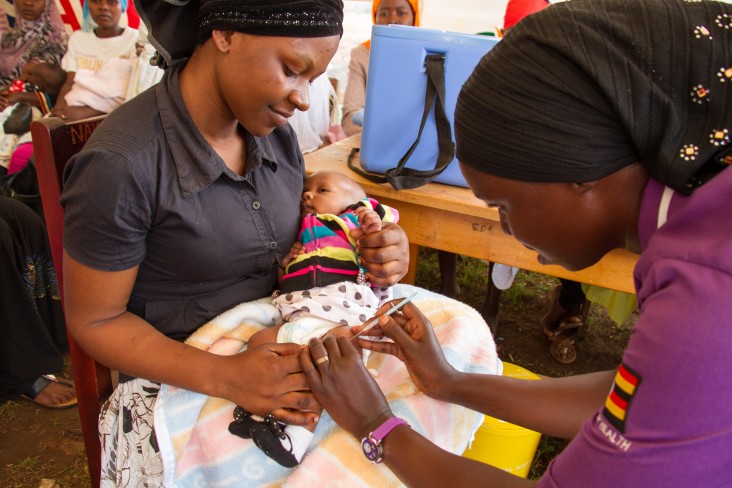Speeches Shim

Immunization has greatly improved child survival in Uganda and is recognized as a key lifesaving intervention. The COVID-19 pandemic, however, has threatened to roll back progress. Movement restrictions have meant that fewer patients are able to get the medical care they need, and fears of infection have made many more reluctant to go to health centers. To address these challenges, the Ministry of Health and its partners have been working to make sure that vital health services, including immunizations, continue as much as possible.
The difficulties are acutely felt in Nwoya district, which has persistently low coverage for child immunizations. The district faces unique challenges, including very remote communities and, especially around Paraa National Park, where wild animal movements can close off roads.
“When the lockdown started, I worried how I would take my child to hospital,” says Ms. Night Lanyero. Ms. Lanyero, a mother of five children, normally spends UGX 20,000 (USD 5) on the one-way 40 kilometer journey from Kinene village to Anaka Hospital in Nwoya District. “Because of Corona, we can’t go anywhere,” she explains, even though the immunization date for her last child had expired by a month.
Weekly data from health centers showed a significant reduction in activity in Nwoya. Health centers had 50 percent fewer patients, with similar trends for maternal and child health services. Vaccines that required multiple visits to health centers saw steep drop-offs in usage. How many women were neglecting to have their babies immunized at all was unclear.
“When I looked at the facility data, the numbers of children getting immunized against measles was dropping. In a typical month, we had an average of 119 children, but after COVID-19, the numbers had dropped to 60. I was worried that they could drop to zero,” says Ms. Susan Akwang, an Assistant Nursing Officer of Midwifery, in charge of Immunization at Anaka Hospital, Nwoya District.
With the approval of Nwoya District COVID-19 taskforce, USAID’s Regional Health Integration to Enhance Services - North Acholi (RHITES-NA), activity worked with the Nwoya district health department to visit 13 hard-to-reach communities in Anaka sub county to learn more and find solutions that could be applied throughout the district.
After meeting with health workers, mothers, mothercare groups, and others, the activity presented its recommendations to the task force, which included allowing mothers to travel on motorcycles and bicycles without the regular permits and partnering with village health teams to reach isolated communities. USAID also offered to support the district health office to distribute necessary supplies to various health centers.
As a result of these recommendations, there has been a notable rebound in service utilization in Nwoya. Village health teams spoke to Ms. Lanyero at her home and explained the options available to her, and before long her 10-month-old received the much-needed immunizations. Within two weeks, 546 children had received various vaccine antigens, 285 got vitamin A, and 584 were dewormed in the selected sites.
Although facilities are still operating at below-normal patient levels, there has been a marked improvement, and when what is at stake is a human life, every small increase is an important victory won.

Comment
Make a general inquiry or suggest an improvement.